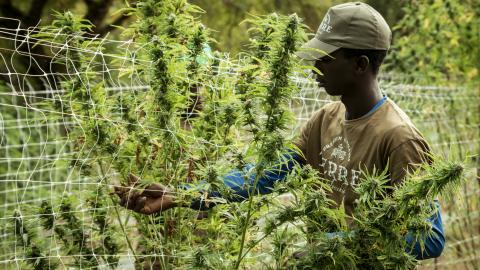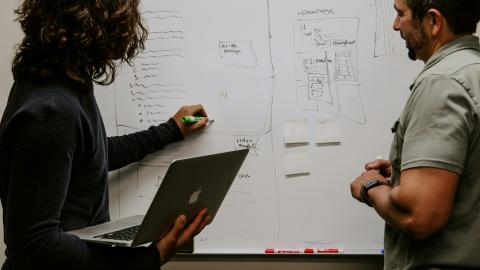
November 1, 2023
During this year’s Northwest Occupational Health (NOHC) Joint Conference, industrial hygienists, infection preventionists, and other safety professionals gathered in Olympia, WA to learn about leading-edge topics in workplace-related illness and injury prevention. The conference brought together 140 + professionals from PNS-AIHA and APIC. A diverse group of attendees joined both in-person and virtually to hear about topics including disease prevention, best practices in healthcare construction, advancements in disinfection strategies, mold in healthcare, and developing positive workplace influence. With so many info-packed sessions to choose from, we left the conference with a wealth of new insight. Here are four of our top takeaways from the three-day event.

The fight to end Legionnaires' Disease continues
Dr. Janet E. Stout, a world expert on Legionella, presented two lectures and a panel on controlling Legionella in the workplace. Dr. Stout’s expertise includes control strategies for Legionnaire’s Disease in water systems. Her practical advice for infection preventionists and industrial hygienists helped rally the troops around a common goal: to continue mitigating Legionella risk in the face of environmental factors like the warming of the planet and aging infrastructure. Check out an example of how a UW student is building on this research by investigating the impact of Legionella on workplace eye wash stations.
Communication is key to fostering behavioral change
Ted Teske, NIOSH Western States Division CDC Health Communication Specialist, gave an overview of communication models that lead to awareness and behavior change in the workplace. He showed the impact of several campaigns from the fishing and oil & gas industries while breaking down the keys to success. Top tips included:
- Keep it simple
- Engage curiosity
- Jolt your audience
- Build credibility
- Use concrete words and evoke images
- Appeal to emotions
For more tips on building your workplace influence, check out the upcoming Authentic Leadership Development courses.
Video is an increasingly accessible tool for health & safety professionals
During the short course of the conference, presenters reviewed the widely-available video editing app InShot. Stephanie Ropes showed how to use this tool to create fast-paced educational videos to reach audiences with audiovisual storytelling. Aaron Wright and Andrew Owen then reviewed ways to incorporate personal storytelling and the importance of being aware of your surroundings when producing videos on worksites. Professor Amy Hesketh, OC Film School at Olympic College, shared examples of effective film techniques to sharpen skills, quality, and impact of videos. Dive even deeper into the latest safety training tool advancements with our Virtual Reality Training Tools.
Grant-funded research accelerates advancements for underserved workers
Five funding recipients from the Professional Training Opportunities Program (PTOP) through the Northwest Center for Occupational Health and Safety presented updates on their research projects. Four of the five presenters focused their research on agricultural worker health, showcasing the vulnerability of this population as hazardous work-related threats continue to persist. Presenters and key quotes included:

- Aanuoluwakiitan (Aanu) Ayeni - Examination of a firefighter's work schedule on sleep regularity and performance “Sleep regularity is a crucial metric for firefighting because of its established link to a number of health outcomes.”
- Solaiman Doza - Evaluating work-associated injuries among self-employed and wage-salaried agriculture, forestry, and fishing workers to identify injury burden and prevention opportunities “The agriculture, forestry, and fishing industry is one of the riskiest professions. The industry has the highest fatality rate and the second highest injury and illness rate. Yet there are gaps in injury surveillance: current nonfatal injury surveillance does not track self-employed or small business injuries.”
- Angie Lara & Colleen Fontana from Fair Work Center - Measuring Safety and Health Risks at Yakima Valley Packing Houses “Information is power! We are using the insights from this study to support workers in organizing both in their workplaces and across industries.”
- Dr. Carly Hyland - Examination of Glyphosate Exposure Among Latinx Farmworkers in Idaho "Farmworkers have hazardous occupations. They face a number of physical, biological, and chemical threats from their occupation. One unique threat is exposure to pesticides.”
- Molly Parker - Employer Perspectives on Wildfire Smoke Hazards in the Agricultural Workplace “We expect hazardous fire seasons to continue year after year, so this research can inform policy makers on what’s working and what isn’t in terms of worker protection.”
These important research projects continue to move the needle for worker safety. Learn more about PTOP grants and keep an eye out for the 2024/2025 funding application here.
The 2024 NOHC Conference promises to be another education-packed event taking place at Skamania Lodge in Stevenson, WA. To learn about other multi-disciplinary events and stay posted for next year’s NOHC registration, visit the Pacific Northwest Section AIHA Events page.
Cover photo: Pexels Artem Podrez #5726794. All other photos: NWCOHS staff.




